One of the fantastic things about espresso is that there are so many variations. Even micro-adjustments to variables like dose ratio or grind size can make a world of difference in the resulting cup.
A Ristretto and Long Shot are among the most common adaptations of a standard espresso. Extraction time is the crucial variable. Ristretto takes a shorter pull, and a Long Shot is (…you guessed it) longer.
In this article, I’ll cover the functional and sensory differences between a Ristretto and Long Shot. We’ll also discuss a few common misconceptions and which one most coffee enthusiasts prefer.
But first, join us as we discuss some baseline knowledge about espresso.
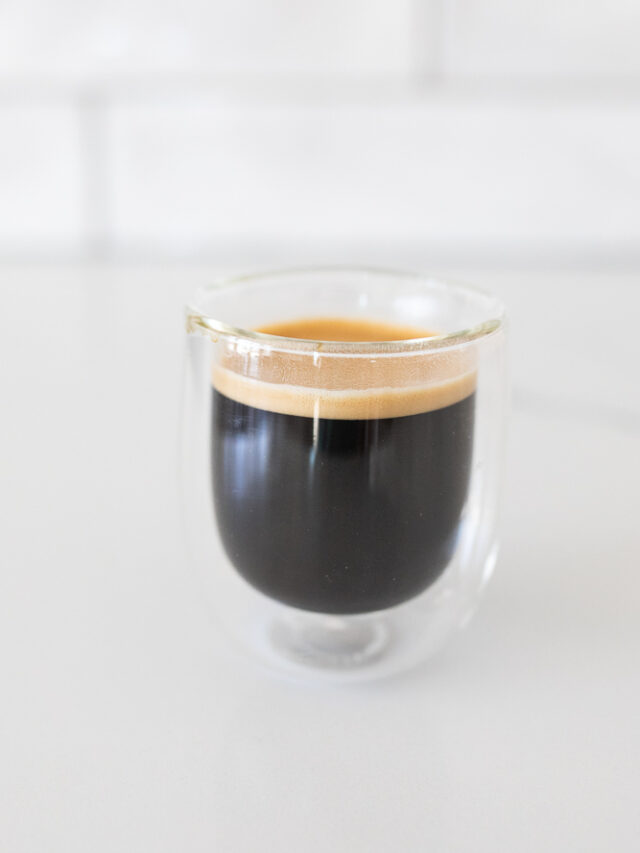
Espresso Basics
It’s the foundation of the modern coffee craze…but what exactly is espresso?
Contrary to popular belief, it’s not some special coffee bean or roast.
Espresso is a unique method of brewing coffee where forcing pressurized hot water through a compressed coffee puck at high pressure. Often imitated but never replicated!
In its pure form, espresso is “pulled” as a shot – an intense 1-ounce drink packed with flavor, body, and caffeine.
One fundamental factor in the popular rise of espresso drink recipes and the speed of preparation. A single shot or double (doppio) can be prepared in under a minute. Unlike drip coffee, it’s made to order.
Many minute variables make espresso what it is, but among the most important are the dose ratio and extraction time.
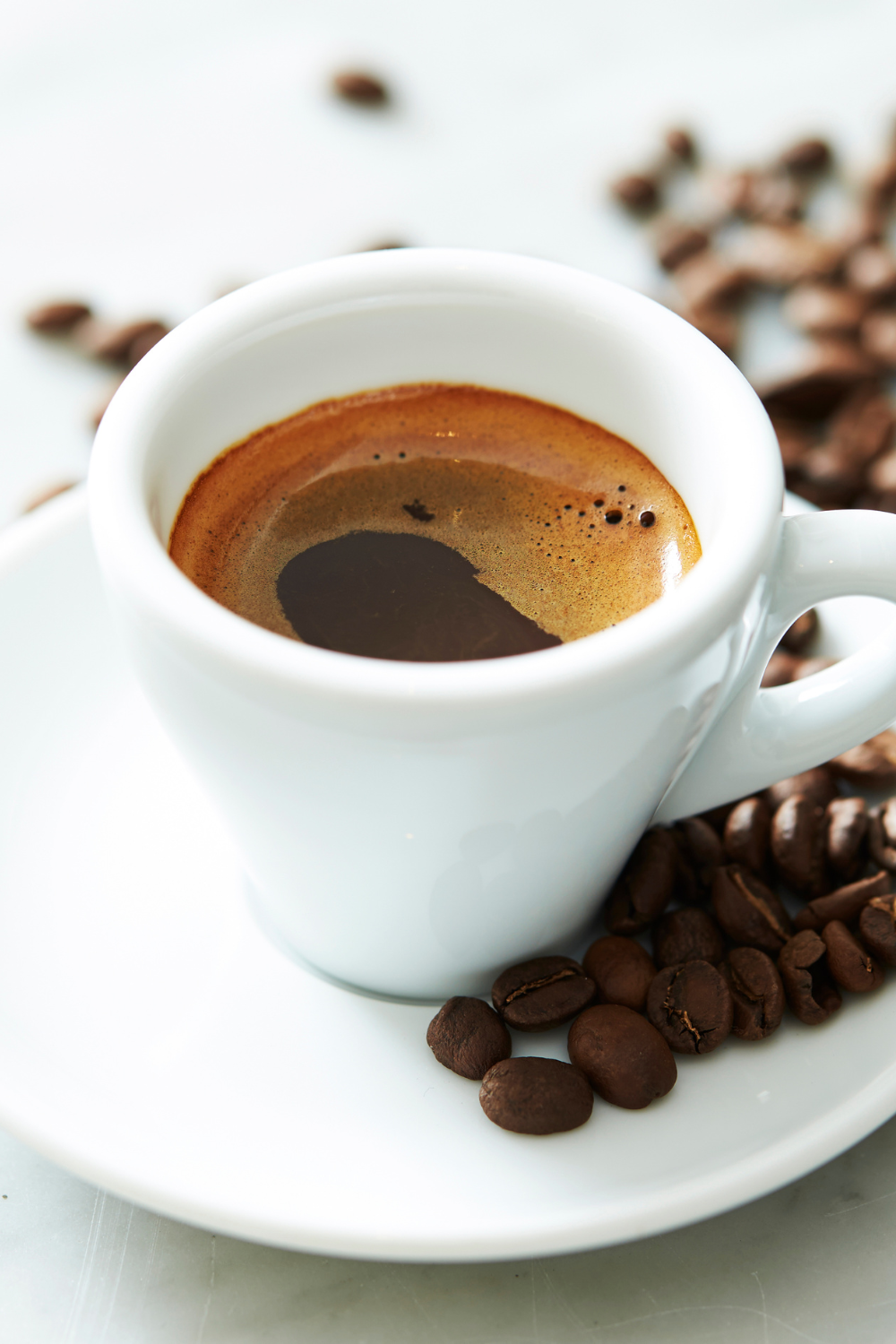
The dose ratio measures how much coffee drink comes out compared to the weight of coffee grounds used to pull the shot. The standard dose ratio for a regular espresso shot is 1:2, meaning that (for a double shot) 18 grams of coffee grounds yield a 36-gram drink.
This translates to about 1 fluid ounce of espresso in volume.
Extraction time is the duration over which water is in contact with fresh ground coffee in the espresso machine. The standard extraction time for espresso is 25-30 seconds.
Add more time, and more elements of the coffee are extracted. Make a pull shorter, and you’ll experience an inverse effect.
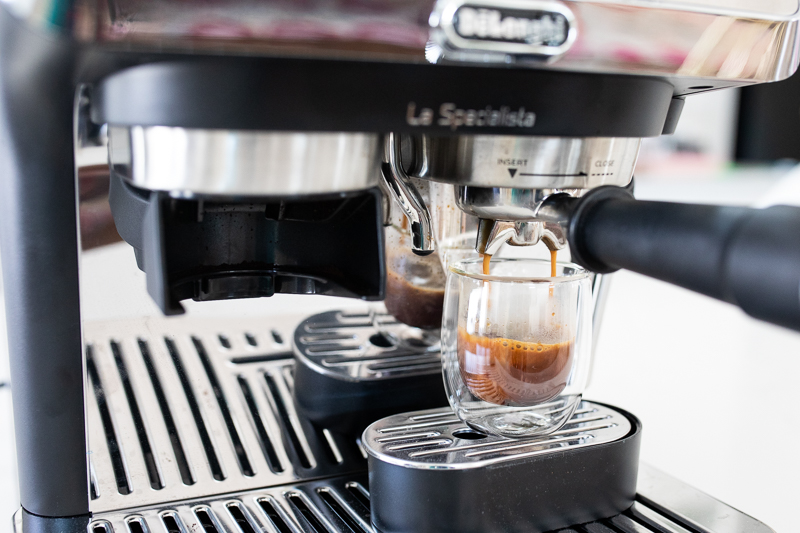
What is a Ristretto?
When it comes to espresso vs ristretto, ristretto is a shot of espresso prepared with an abbreviated extraction time – typically 15-20 seconds.
The word “Ristretto” is the Italian word meaning “restricted”, which is precisely what happens when this drink is prepared. This drink also goes by the name “short shot”. The amount of water that flows into the cup is restricted, which is the key when it comes to this type of espresso.
Ristretto has a rich and sweet and more intense flavor, with a lot of crema. It tends to be much darker and denser than standard espresso. Many baristas at coffee shops prefer ristretto for milk-and-coffee hot or iced drinks. It’s intensity easily cuts through the flavor of the milk.
A shorter extraction time means less water flows through the coffee puck and into your cup, thus a smaller extraction ratio. For ristretto, 18 grams of ground coffee yield an 18-27 gram drink, or about ½ ounce in volume. The extraction ratio is closer to 1:1.
What is a Long Shot?
When preparing a Long Shot (also called a Lungo), the pull time is extended to 35-40 seconds.
Longer extraction means that more sediment is dissolved from the coffee puck. It also translates to more water in the cup.
A Long Shot espresso has a 1:3 dose ratio, meaning that 18 grams of ground coffee yield a 54-gram coffee drink, or about 2 ounces in volume. This process takes nearly twice as long as a traditional espresso extraction.
There is a thin crema, and the color tends to be pale compared to espresso.
Some people like Long Shots for their ability to open up the “origin flavors” of the beans.
Differences between a Ristretto vs Long Shot
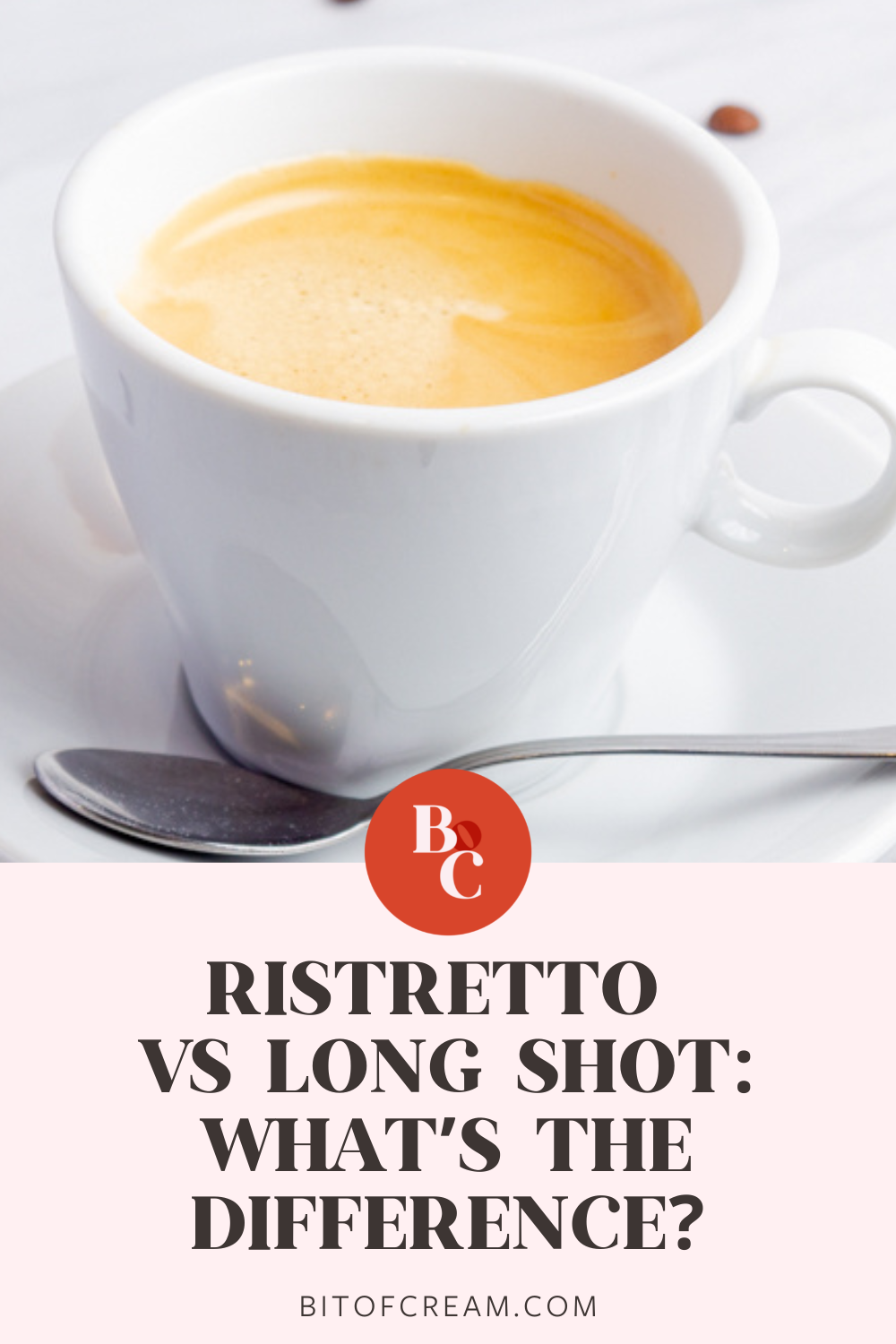
Size
Line up a Ristretto and Long Shot next to a standard Espresso. The main difference you’d probably notice is the difference in volume.
A shorter extraction time means that a Ristretto has less water than espresso, and therefore a smaller volume of liquid in the cup. With a Long Shot, you get the opposite effect.
Traditional espresso has a volume of 1 ounce for a single shot. A Ristretto single shot is only ½ ounce, half the volume of espresso. And a Long Shot is typically about 2 ounces for a single shot. Twice the volume of a standard espresso.
Flavor
As part of the coffee extraction process, acidity extracts first. Then sweetness. Then bitterness.
When you shorten the extraction time, the cup will take on a higher density of characteristics from the early part of the extraction process. And, as you extend extraction, you’ll increase flavor characteristics derived from the latter part of the extraction.

That is why, when compared with traditional espresso, Ristretto tastes more acidic and less bitter. It’s also an excellent way to maximize the natural “sweetness” of the cup!
Overall the sensory experience of Ristretto offers incredible intensity.
By contrast, a Long Shot pulls in more bitterness from the latter stages of an extended extraction process. Overall the flavor is less intense because of dilution from a long pull and more water in the cup.
Nuttiness, caramel, and chocolate are the different flavors that tend to stand out with a Long Shot.
Body
Because less water is used for a shorter pull, Ristretto has a much thicker body. By contrast, Long Shots look (and taste) thinner or more watery.
Crema, the tan foamy bubbles that gather atop an espresso shot, is magnified in a Ristretto.
A Lungo is noticeably larger from the get-go. With an espresso shot being 1 oz, a Lungo easily doubles that amount of liquid.
Since you pull an espresso with half the amount of water as a Lungo, it’s more concentrated and, therefore, much darker in color. As a result, an espresso looks almost black in a cup with ⅓ of an inch of silky, golden crema on top.
A Lungo is less opaque than an espresso, with a lighter brown translucence. In addition, the crema on a Lungo is much thinner and paler than an espresso’s.
Caffeine
A Long Shot has slightly more caffeine content than espresso, given the prolonged extraction. And a Ristretto has marginally less.
In a nutshell, more water means more extraction and, thus, more caffeine content.
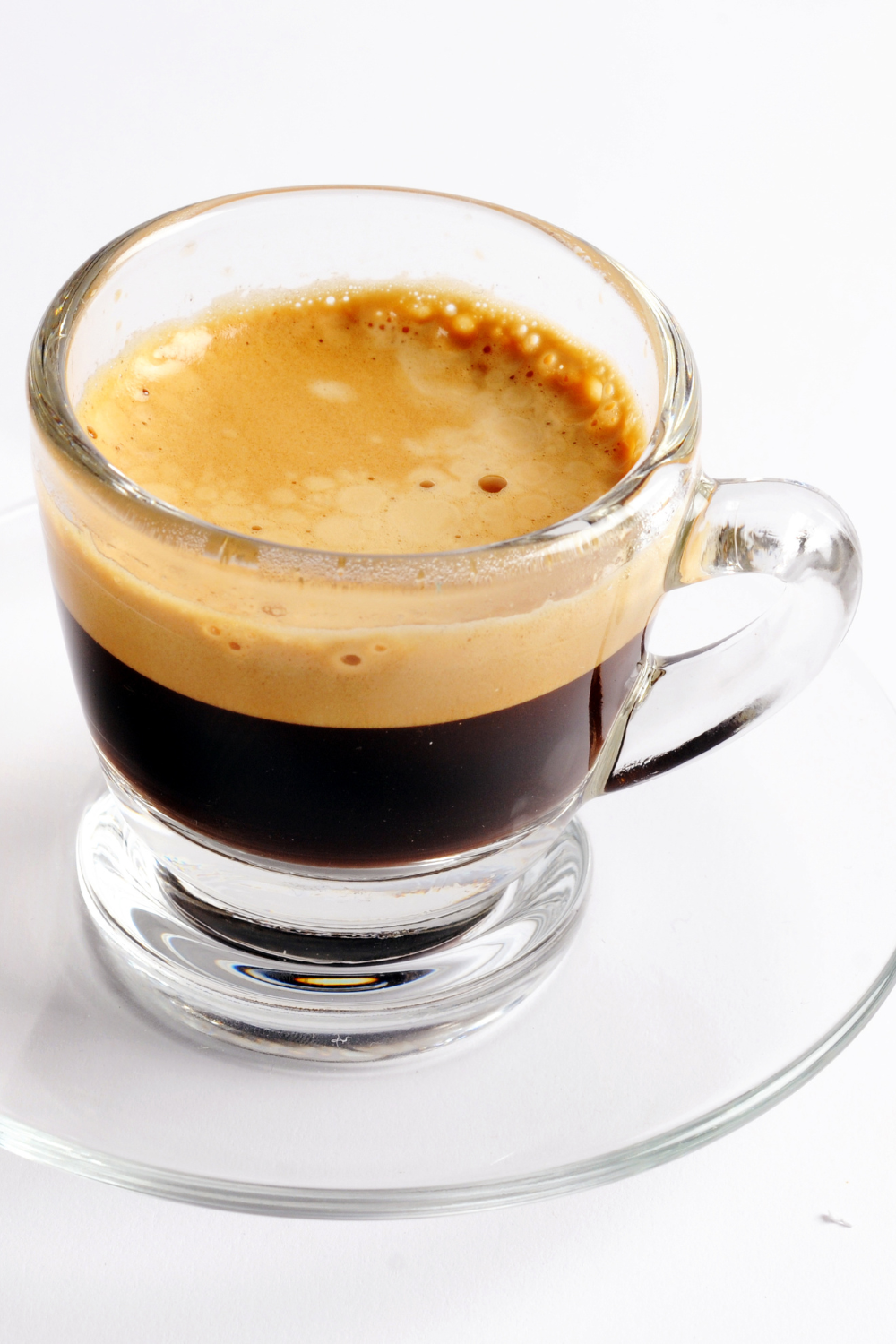
Comparing the drinks by volume, Ristretto has the most caffeine per ounce. But, since the two drinks’ standard sizes are 1/2 ounce vs. 2 ounces, the Lungo has more caffeine in one serving.
Other Similar Drinks
Double Espresso vs Long Shot
A double espresso shot (also called a doppio) is easily confused with a Long Shot. Both drinks are pulled from the same machine and have an equivalent volume (2 ounces).
The functional difference between the two is related to the extraction time and dosing ratio. A doppio is pulled for 25-30 seconds with a 1:2 dosing ratio, while a Long shot is pulled for 35-40 seconds with a 1:3 dosing ratio.
A Long Shot is less concentrated than a doppio and, therefore, less caffeinated and with a less intense flavor profile.
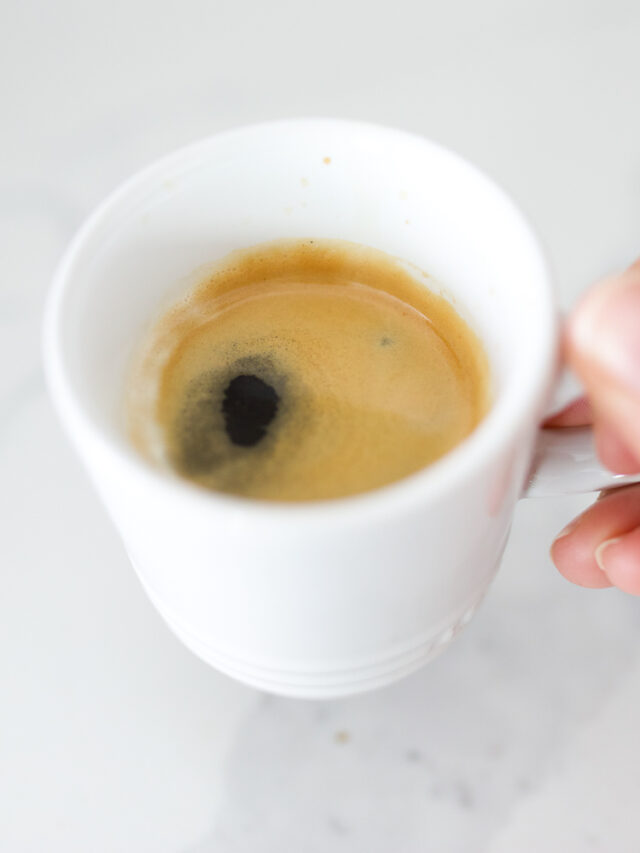
Americano vs Long Shot
There is a similar principle at play with Americano and a Long Shot. Both are diluted variations on a standard espresso shot. The difference is in how you prepare it.
Unlike a Long Shot, which is pulled from an espresso machine in its entirety, water is added to an Americano after the pull.
An Americano is also about twice the serving size of a Long Shot at 6-8 ounces.

How To Pull Ristretto
1: Grind
For the best results, grind your espresso beans only moments before brewing. This is true for all types of coffee prep – the fresher, the better. Ground coffee left exposed to the open air will oxidize quickly and lose a lot of flavors.
Ensure your grinder is set on a very fine setting. The resulting ground coffee should be a fine grind about the consistency of table salt.
2: Dose
Picking your “dose” means choosing the weight or amount of coffee grounds used in the portafilter to brew your drink. It’s often given as a ratio, like 1:1 for Ristretto.
This ratio compares the weight of ground coffee to that of the resulting drink.
For a standard Ristretto, use 7 grams of ground coffee to prepare a ½-ounce drink. Scale up this ratio to make a double ristretto.
3: Level & Tamp
To pull a good shot, we need to establish an even extraction. This means organizing ground coffee in the portafilter so that it is level and of a consistent density.
If the grounds are less dense on one side, pressurized water from the espresso machine will find the path of least resistance to flow through. This scenario creates over-extraction on one side of the portafilter and under-extraction on the other.
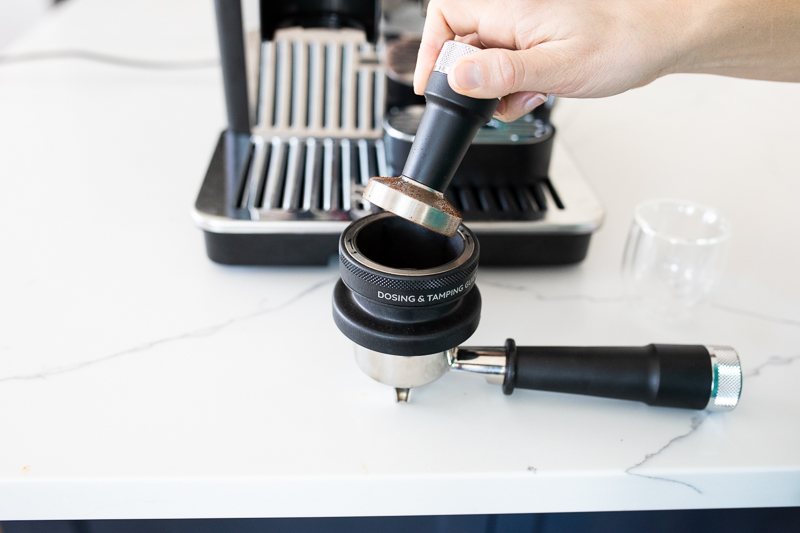
Tap the exterior edge of your portafilter while rotating it slightly so that the ground coffee settles into the basket and looks even.
Tamping is the second part of leveling. It will take some practice to hone your technique.
Position your portafilter snugly against a level surface like a countertop. Hold the handle with your non-dominant hand. Grip the tamper with your dominant hand, and press into the portafilter firmly to compact the ground coffee.
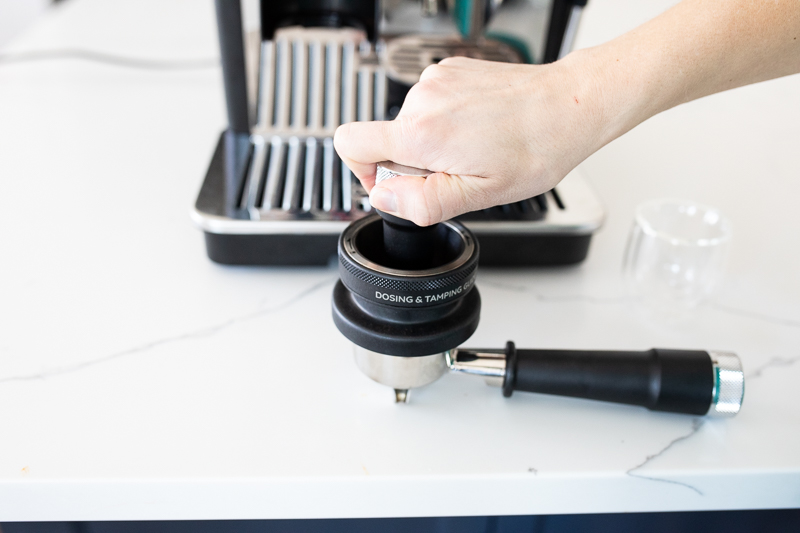
Your effort should feel firm, but you should not struggle or strain.
4: Brew
Now you’re ready for the brewing process…or in other words, you’re ready to pull a shot!
Fasten the portafilter into your espresso machine. Place a cup under the nozzle, and start your extraction timer.
The extraction should last 15-20 seconds, resulting in a ½-ounce drink. Watch the portafilter during extraction and observe if coffee flows evenly out. This is a good signal if your tamping needs adjustment.
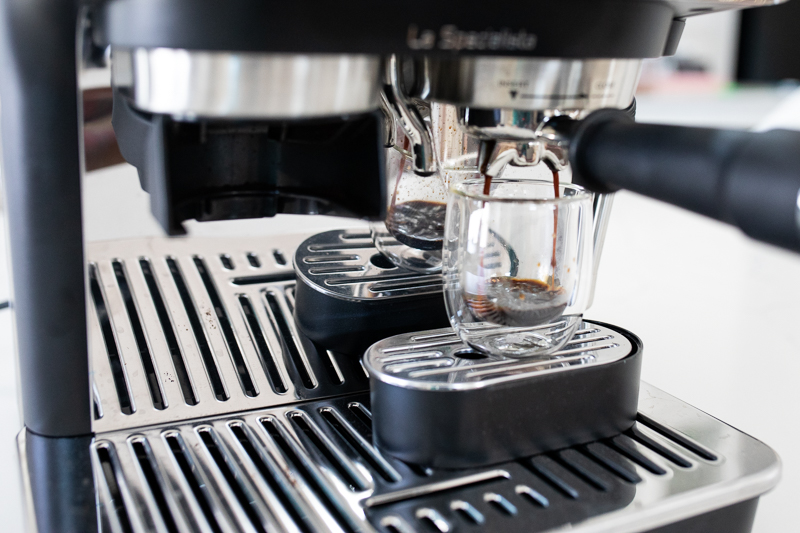
How To Pull A Long Shot
1: Grind
The grind size for a Long Shot should be slightly more coarse than it was for Ristretto. Less like table salt, and more like unbleached granulated sugar.
Again, you should grind your beans right before brewing for the best flavor.
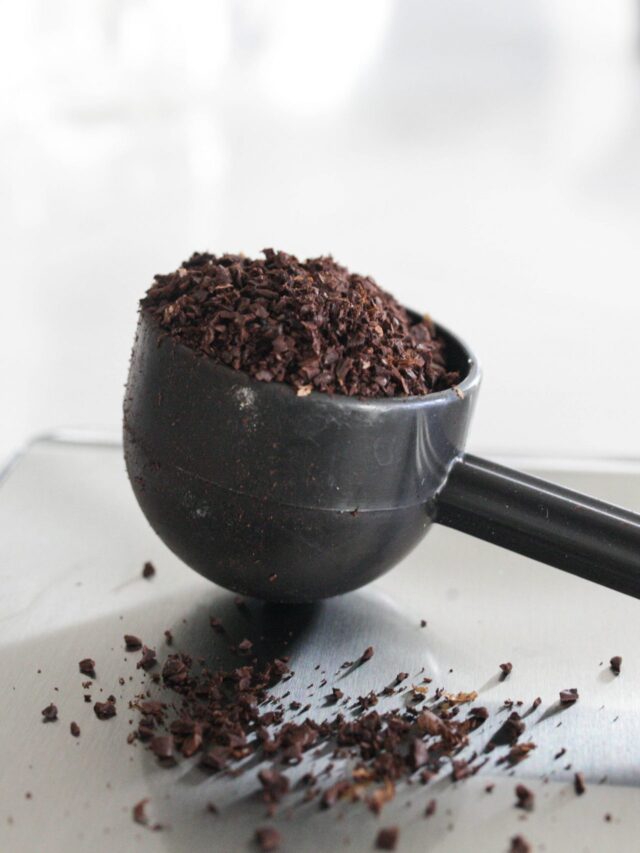
2: Dose
A Long Shot uses the same amount of ground coffee as a Ristretto, but the dose ratio will be larger (1:3) because of the extended extraction time.
Fill your portafilter with 7g of your freshly ground beans.
3: Level & Tamp
Level the grounds in your portafilter by gently tapping the filter’s side with your hand’s palm. This step makes achieving a perfect tamp and evenly brewed espresso easier.
If you’re looking for a detailed tutorial on how to tamp espresso, head here!.
Rest the portafilter firmly against a level surface like a countertop. Grip the handle with your non-dominant hand. With the other, hold the tamper like a doorknob.
Press into the portafilter firmly at a right angle to compact the ground coffee.
Practice makes perfect, so don’t be discouraged if your first try feels a bit awkward.
5: Brew
Place the filter into the machine, align your cup under the spout, begin the pull, and start your timer. The extraction should last 35-40 seconds, resulting in a 2-ounce drink.
FAQ
The most significant differences between a Ristretto and Long Shot are the taste and volume. A Long Shot is actually stronger and has more caffeine due to the longer extraction time. But it also has a less intense flavor, body, and caffeine per ounce because of the volume of water in the drink.
No, a ristretto shot consists only of water and dissolved solids from ground coffee. It does have a sweeter flavor profile and less bitterness than other coffee drinks due to a shorter extraction time.
You can use identical coffee beans for ristretto, long shot, and any other type of coffee. Many people prefer coffee beans prepared as a dark or dark-medium roast for espresso-based drinks.
Less extraction means less caffeine. Even though it is a small difference, a ristretto shot has a little bit less caffeine than a regular shot of espresso.
So which one should you order at the coffee shop or make at home? This is a bit of a personal preference! If you a more intense flavor or a smaller shot, go for the ristretto coffee.
On the other hand, if you want a larger drink, slightly more caffeine or less crema, try the long shot.
Either way, as coffee lovers we definitely recommend trying both to see which one you like best! Looking for more coffee fun? Head over to one of these coffee guides!
